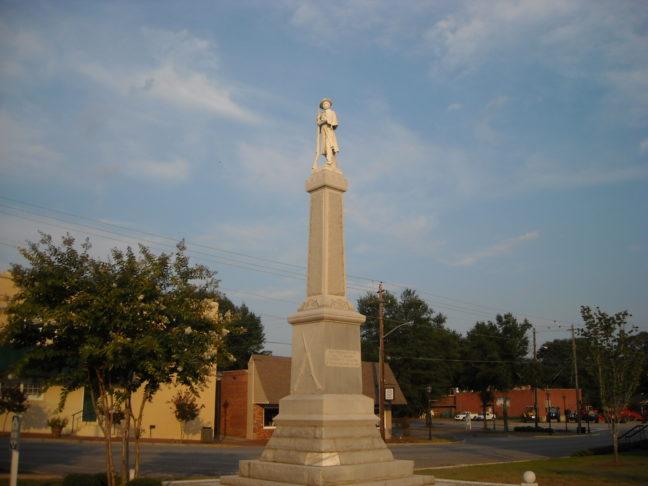Let’s get something out of the way immediately: The Confederacy is not a rich part of our history.
It is not something worth erecting statues and memorials in a physical manifestation of a set of ideas that aimed to completely dehumanize and merchandize African Americans with no foreseeable conclusion. Should we take an incredibly brief but summative history lesson? Confederate ideals hinged on the protection of slavery under national law, and the fact that I feel obligated to emphasize its definition is baffling.
Symbols of Robert E. Lee, the commander of the Confederate Army, an army that was putting their lives on the line to protect the legal annihilation of millions of black lives, should not be memorialized with a statue, plaque or pedestal. Defending the permanence of Confederate symbols is, in essence, defending the celebration of figures who fought on the side of white supremacy.
At this point, the usual argument is to ask where the line is. Our president even spoke out with similar concerns, citing the possible removal of statues of George Washington and Thomas Jefferson next. This question is bizarre, and for a simple reason: The removal of statues with historic racist connotations is not a hardship comparable to the institutionalized racism that perpetuated as a result of slavery — even the word hardship feels like an understatement to the lasting impact of our country’s darkest era.
The argument should end there, but sadly, it hasn’t. Protection of culture is obviously important. Without it, some cultures would disappear without a trace, forgotten by the few remaining who were knowledgeable on the subject. But removing Confederate statues is not an attempt to stifle or disregard our history. In fact, it’s the opposite.
For those who wish to see the monuments removed, the desire is to prevent the creation of a space in which the celebration of such a mortifying sector of history is allowed or encouraged, which is what a government-sponsored monument to the Confederacy permits. Additionally, it’s now more than ever where our country desperately needs to discuss the implications of a racist history. After white supremacists were given a platform to promote their objectively racist message in defense of a Confederate statue, it’s clear the preservation of history is not the main goal of maintaining confederate memorials, rather, it’s the statues connection to white supremacy that matters to its supporters.
Confederate captives in Madison: Camp Randall’s history as Civil War prisoner-of-war camp
This conversation needs to take place, but in two majorly different ways. Rather than arguing over what should be done with the monuments, we should be discussing the best way to make the systematic impacts of the Confederacy known to Americans after all Confederate memorials are torn down. This would do two main things: It would remove a space that idolizes white supremacy and it would make an effort to educate those who are ignorant of how lasting the results of slavery are for African Americans today. Secondly, it would ideally get the ball rolling for conversation surrounding similar justice for the First Nation’s People whose history, land and rights were systematically and forcibly smothered by those who settled and built this country.
At the end of the day, this should be a simple issue to deal with: Take them all down. It’s not an issue of marginalizing the white voice — which is a laughable plight as is. But, it’s an issue of supporting those who want to feel supported and loved in their own country, and that’s a difficult conclusion to reach when Robert E. Lee stands high as an immortal reminder that there is an enormous gap in whose voice is valued in this country.
Lucas Johnson ([email protected]) is a sophomore intending to major in journalism














